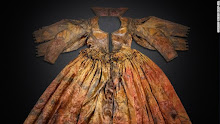The third and final part of the "Goddess Journey" chapter of my book-in-slow-progress, A Memory of Love: The Spiritual Mission of a Princess.
..............................
Glorious
Inanna
The Sumerians were one of
the world’s first known civilizations, taking form in the fourth millennium
BCE, and, according to Joseph Campbell, its mythology was the source of
Babylonian, Assyrian, Phoenician, and Biblical traditions. The glorious Inanna,
Sumer’s primary deity, was the goddess of love, sensuality, fertility, procreation,
war, and rebirth. Throughout the centuries, as the world’s centers of power
changed, she was worshiped in ancient Babylon as Ishtar, then identified with
the Greek Goddess Aphrodite and, because she was seen as the morning and
evening’s bright star Venus, Inanna also later became associated with the
celebrated Roman Goddess.

Inanna has a rich, multi-dimensional
legacy, celebrated as the Queen of Heaven and Earth. “She embodies the Divine
Feminine in all its splendor: a sensuous courtesan and a timid virgin, a
life-giving mother and an eternal child, merciful and wicked, wild, passionate,
untamed,” wrote Lana Adler in “7 Goddess Archetypes of Empowerment.” “In other
words, everything (with the exception of the mother, perhaps) patriarchy aimed
to demonize and destroy.” (You only have to look as far as the Bible to see
evidence of this.)

Inanna is synonymous with
transformation. In The Hero With A
Thousand Faces, Joseph Campbell wrote that “the oldest recorded account of
the passage through the gates of metamorphosis is the Sumerian myth of the
goddess Inanna’s descent to the nether world.” Abandoning heaven and earth, she
“abandoned lordship, abandoned ladyship,” this goddess “from the ‘great above’ she
set her mind toward the ‘great below’”—the hero’s journey. Her courageous
descent and transformative return, the ultimate rite of passage, is legendary,
her story told for thousands of years—with many faces and in many incarnations.
“As we are told by the Vedas: ‘Truth is one, the sages speak of it by many
names.’”

The legend of Inanna,
encompassing a mythological journey, intersected with Diana’s life, even beyond
its end. Well-known British astrologer and author Nicholas Campion made some
profound royal observations following Diana’s death. But first, a little
background: “After the second world war,” Campion explained, “Carl Jung [founder
of analytical psychology] wrote that the phenomenon of Nazism could be partly
explained by the eruption of the archetype Wotan, the Teutonic god, into the
German collective unconscious.” After watching the funeral service for Princess
Diana, Campion made this declaration: “I would say that what we have just
witnessed was the eruption of the archetype of Inanna, the archaic Venus, into
the contemporary collective unconscious.”

Campion, also a historian
of cultural astronomy, believed there were people who would doubt him and found
it “astonishing” that it had not been realized before, but it was his
“contention that monarchy has never lost its magical, mystical functions,
merely that the steady creation of a constitutional monarchy with a
determinedly ordinary royal family, has concealed it.” During the last two
decades of the twentieth century, Campion saw that “from the moment Diana
appeared she constellated the archetype of Inanna. She was connected far less
to the contemporary royal family of good works and middle class values than to
the ancient magical monarchy of ancient cosmology of life and fertility;
sacrifice and resurrection. Her life and death were unique in our lifetime,
though perhaps not in British history.”

“As an archetype,” Lana Adler
added, “Inanna symbolizes the powerful seductress who uses her considerable
female persuasion to her advantage.” However, we’re reminded that “sensuality
is a gift; but it can also be a powerful weapon. When we trade on it or use it
to control others, we give away a part of ourselves.” Women don’t have to look
to history to know how easy it is to give away our power, whether we’re being manipulated
or we are the manipulator. And when it’s through our sensuality, through sex, Adler
believes that it can be seen as a “symptom of deep self esteem issues and
subconscious fears.” I sensed that Diana was waking up to this awareness at the
very end of her life, perhaps in the last hours. Frustrated with being in the
throes of a superficial affair, she was unhappy and ready to be home with her
children, to get back to her newfound passion for her work in service to others;
to restore her inner power and, with divine guidance, find love within. But her
bigger mission took over, and her life moved into legend. ~


































































